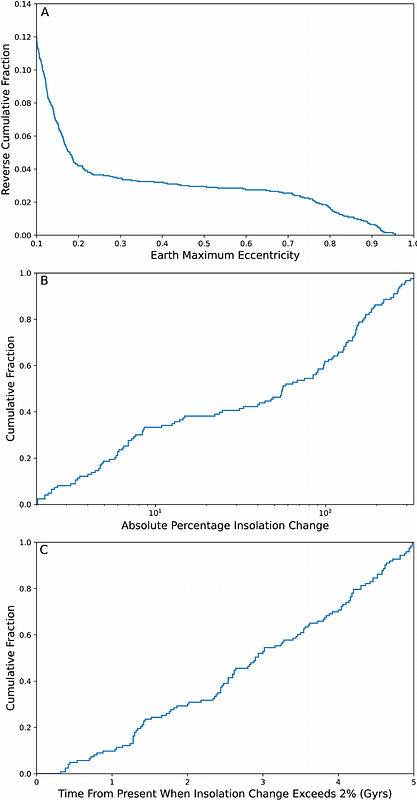The Influence of Passing Field Stars on the Solar System's Dynamical Future

The Influence of Passing Field Stars on the Solar System's Dynamical Future
Nathan A. Kaib, Sean N. Raymond
AbstractThe long-term dynamical future of the Sun's planets has been simulated and statistically analyzed in great detail, but most prior work considers the solar system as completely isolated, neglecting the potential influence of field star passages. To understand the dynamical significance of field star encounters, we simulate several thousand realizations of the modern solar system in the presence of passing field stars for 5 Gyrs. We find that the impulse gradient of the strongest stellar encounter largely determines the net dynamical effect of field stars. Because the expected strength of such an encounter is uncertain by multiple orders of magnitude, the possible significance of field stars can be large. Our simulations indicate that isolated models of the solar system can underestimate the degree of our giant planets' future secular orbital changes by over an order of magnitude. In addition, our planets and Pluto are significantly less stable than previously thought. Field stars transform Pluto from a completely stable object over 5 Gyrs to one with a ~5% instability probability. Furthermore, field stars increase the odds of Mercury's instability by ~50-80%. We also find a ~0.3% chance that Mars will be lost through collision or ejection and a ~0.2% probability that Earth will be involved in a planetary collision or ejected. Compared to previously studied instabilities in isolated solar systems models, those induced by field stars are much more likely to involve the loss of multiple planets. In addition, they typically happen sooner in our solar system's future, making field star passages the most likely cause of instability for the next 4-4.5 Gyrs.